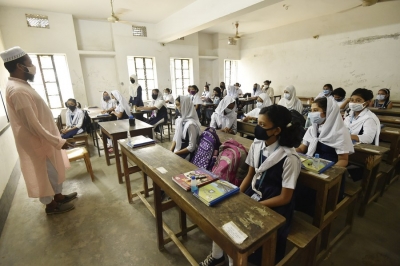
New Delhi, Aug 17 (IANS) China is expected to face an adverse economic impact in the coming decades due to its ageing population and high government debt, according to reports.
High government debt raises interest costs and leaves less fiscal room to respond to shocks, just as ageing populations push up pension and health outlays, according to a report in Newsweek.
The Chinese and US governments are among the most indebted in the world. The US government’s gross debt at 123 per cent is equal to the country’s GDP, according to International Monetary Fund data.
China’s stands at 84 per cent, buoyed by debt-driven growth in the 2010s and a housing market crunch that has heavily indebted local governments. London-based global advisory firm Oxford Economics estimates the Chinese economy’s potential growth could be cut roughly in half by the 2050s.
According to the Newsweek report: “Soaring pension and healthcare expenses are the biggest policy challenge of the 2020s in all advanced economies and most emerging ones.”
As per a United Nations report, China currently has a median age of around 40, which is well above the global average, and is projected to reach 52 by 2050. This would be much higher than even the US median age, which is expected to stay around 41 years.
China’s old-age dependency ratio, or the share of people aged 65 and older, is projected to rise by more than 50 percentage points by 2026 compared to 2010, versus roughly 8-10 points in the United States. This will strain China’s modest safety net. And unless the country is able to reverse its flagging birth rate, this will shift the burden onto a smaller pool of workers, according to the report in Newsweek.
Jed Cartledge, an economist and one of the authors of the Oxford Economics report, said this better positions the US demographically. China’s fertility rate of 1.2 births expected per woman is among the world’s lowest.
While higher, the US rate of 1.6 births remains well below the rate of 2.1 necessary to sustain a population naturally. Cartledge pointed out, however, that historically, immigration has largely offset declining births and averted demographic problems in the U.S.
“Admittedly, US immigration is taking a hit under the second Trump presidency, but we’re expecting the reduction in net immigration to only last through the remainder of his second term before reverting to a 1.1 million per annum, which was the typical pace prior to the pandemic,” Cartledge told Newsweek.
–IANS
sps/vd




